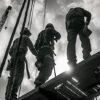Maintaining the structural integrity and aesthetic appeal of a building’s facade is crucial for ensuring safety and longevity. Traditional methods of facade repair often involve scaffolding and heavy machinery, which can be both time-consuming and costly. However, with advancements in technology and methodology, innovative solutions in facade repair and rope access techniques are revolutionizing the industry. Companies like NDT International, available at NDT International are at the forefront of these developments, offering efficient, safe, and cost-effective solutions for facade maintenance and repair.
The Importance of Facade Maintenance
Facades are not just the external face of buildings; they play a critical role in protecting the structure from environmental elements, ensuring energy efficiency, and contributing to the overall aesthetic of urban landscapes. Over time, exposure to weather, pollution, and other factors can cause deterioration, leading to issues such as water ingress, structural damage, and compromised insulation. Regular maintenance and timely repairs are essential to prevent minor issues from escalating into major problems that can compromise the safety and functionality of a building.

Traditional Facade Repair Methods
Traditional facade repair methods often involve extensive scaffolding or the use of cranes, which can be intrusive, expensive, and time-consuming. These methods may require road closures, disrupt building occupants, and pose significant safety risks to workers. Moreover, the visual impact of scaffolding can be undesirable, particularly in high-traffic urban areas or historically significant buildings where aesthetic considerations are paramount.
Innovative Facade Repair Solutions
1. Rope Access Techniques
Rope access techniques have emerged as a game-changer in the field of facade repair. This method involves highly trained technicians using ropes and specialized equipment to access and repair facades without the need for scaffolding or heavy machinery. Rope access is not only cost-effective but also minimizes disruption to building occupants and the surrounding environment.
Benefits of Rope Access
- Cost-Effectiveness: Rope access eliminates the need for expensive scaffolding and heavy machinery, significantly reducing project costs.
- Minimal Disruption: Technicians can access hard-to-reach areas quickly and efficiently, minimizing disruption to building occupants and pedestrians.
- Safety: Rope access is governed by stringent safety standards, and technicians undergo rigorous training to ensure safe operations.
- Flexibility: This method is ideal for a variety of buildings, including high-rise structures, historical buildings, and confined spaces.
2. Non-Destructive Testing (NDT)
Non-destructive testing (NDT) is a crucial component of modern facade repair solutions. NDT techniques allow for the assessment of a building’s condition without causing any damage. This approach is invaluable for identifying underlying issues, such as structural weaknesses or hidden cracks, that may not be visible to the naked eye.
Key NDT Methods
- Ultrasonic Testing: Uses high-frequency sound waves to detect internal flaws and measure material thickness.
- Infrared Thermography: Detects heat patterns to identify areas of moisture ingress, insulation defects, and other issues.
- Magnetic Particle Testing: Used to detect surface and near-surface discontinuities in ferromagnetic materials.
- Visual Inspection: Experienced technicians use specialized equipment to perform detailed visual assessments of facades.
3. Drone Inspections
Drones are increasingly being used in facade inspections, offering a safe and efficient way to survey large areas and difficult-to-access locations. Equipped with high-resolution cameras and sensors, drones can capture detailed images and data, allowing for comprehensive assessments without the need for physical access.
Advantages of Drone Inspections
- Safety: Drones can access hazardous or difficult-to-reach areas without putting workers at risk.
- Efficiency: Large areas can be surveyed quickly, providing real-time data for faster decision-making.
- Cost Savings: Reduces the need for scaffolding and other costly access methods.
- Detailed Documentation: High-resolution imagery and data collection allow for precise analysis and documentation of facade conditions.

4. Advanced Materials and Techniques
The use of advanced materials and innovative techniques is enhancing the effectiveness and durability of facade repairs. Materials such as fiber-reinforced polymers, high-performance coatings, and sealants are being used to address specific repair needs, providing long-lasting solutions that withstand harsh environmental conditions.






